The Subsea Micro-Drilling Vehicle’s Dynamic Analysis during Landing
Abstract
:1. Introduction
2. Landing Process and Establishment of MBD Model
2.1. SMDV Landing Process
2.2. Establishment of the Multi-Body Dynamic Model
2.3. Establishment of the Multi-Body Dynamic Model
2.4. Analysis of the Effect of Landing Water Resistance
3. Simulation Analysis of Landing Dynamics
3.1. SMDV Landing Response Analysis
3.2. Simulation Analysis of SMDV Slope Landing Substrate
4. Conclusions
- (1)
- The mechanical parameters of deep-sea sediment substrate in a particular sea area are determined by pressure-sinkage and triaxial undrained and unconsolidated (UU) compression tests; the equivalent free-fall height is used instead of the release height because the SMDV is affected by water resistance and buoyancy when it is landing on the substrate; based on the specific structural design parameters of the SMDV, a multi-body dynamics model of the SMDV’s release fall trajectory is developed.
- (2)
- An experimental simulation of the SDMV at various release heights was conducted. Results showed that when the SMDV landed on a flat substrate, its subsidence increased gradually with the increasing release height, reaching a maximum of 347 mm at a release height of 5 m. At the same time, the center of gravity impact acceleration was less than seven gravity accelerations, ensuring the safety of electronic components on the body and normal operation of the SMDV after landing.
- (3)
- Experiments involving the simulation of the SMDV landing on slopes of different angles were conducted, and the results indicated that when the SMDV landed on the slope, it may take on three different states, namely stable, slip, and overturn. Among the three orientations in which the SMDV is placed—forward, backward, and lateral—the risk of slipping and flipping is the least when it is placed forward, and the risk is comparable when it is placed backward and lateral, with the increase of the release height of the SMDV. Its ultimate overturning angle decreases while the ultimate slipping angle remains nearly unchanged.
Author Contributions
Funding
Institutional Review Board Statement
Informed Consent Statement
Data Availability Statement
Conflicts of Interest
References
- Liu, D.; Jin, Y.; Wan, B.; Peng, Y.; Huang, X. Review and development trends of deep-sea mineral resource core sampling technology and equipment. J. China Mech. Eng. 2014, 25, 3255. [Google Scholar]
- Liu, S.; Hu, J.; Zhang, R.; Dai, Y.; Yang, H. Development of mining technology and equipment for seafloor massive sulfide deposits. Chin. J. Mech. Eng. 2016, 29, 863–870. [Google Scholar] [CrossRef]
- Leng, D.; Shao, S.; Xie, Y.; Wang, H.; Liu, G. A brief review of recent progress on deep sea mining vehicle. Ocean Eng. 2021, 228, 108565. [Google Scholar] [CrossRef]
- Zhang, Q.; Zhang, Y.; Zhang, A. Research status of benthic small-scale crawling robots. Robot 2019, 41, 250–264. [Google Scholar]
- Brandt, A.; Gutt, J.; Hildebrandt, M.; Pawlowski, J.; Schwendner, J.; Soltwedel, T.; Thomsen, L. Cutting the umbilical: New technological perspectives in benthic deep-sea research. J. Mar. Sci. Eng. 2016, 4, 36. [Google Scholar] [CrossRef] [Green Version]
- Henthorn, R.G.; Hobson, B.W.; McGill, P.R.; Sherman, A.D.; Smith, K.L. MARS benthic rover: In-situ rapid proto-testing on the Monterey Accelerated Research System. In Proceedings of the OCEANS 2010 MTS/IEEE SEATTLE IEEE, Seattle, WA, USA, 20–23 September 2010; pp. 1–7. [Google Scholar]
- Watanabe, M.; Tashiro, S.; Momma, H. Loss of the full ocean depth ROV Kaiko–Part 3: The cause of secondary cable fracture. In Proceedings of the The Fourteenth International Offshore and Polar Engineering Conference, Toulon, France, 23–28 May 2004. [Google Scholar]
- Gao, Y.; Zhou, Y.; Guo, W.; Fu, Y.; Gao, S.; Wei, Z.; Sun, H.; Sun, Y. Design and Optimization of Multipoint Sampler for Seafloor Sediment Carried by a Deep-Sea Landing Vehicle. J. Mar. Sci. Eng. 2022, 10, 1937. [Google Scholar] [CrossRef]
- Hong, H.; Wang, H. Research on Assessment Method of Airbag Cushion System for Air dropping Equipment. J. Mech. Eng. 2015, 51, 148G54. [Google Scholar] [CrossRef]
- Li, H.; Cao, Y.; Sun, T.; Yang, S. Study on Suspension Breakdown of Tracked Vehicle when Running onto a Slope. Mech. Sci. Technol. Aerosp. Eng. 2017, 36, 621–625. [Google Scholar]
- Yang, Z.; Liu, C.; Li, J.; Guo, S.; Li, J. Dynamic Modeling and Simulation of Airborne Vehicle’s Landing Buffer Process. Acta Armamentarii 2022, 43, 26. [Google Scholar]
- Du, B.; Jiang, Y.; Zhang, H. Dynamic analysis of landing autonomous underwater vehicle. Trans. Tianjin Univ. 2012, 18, 298–304. [Google Scholar] [CrossRef]
- Yu, Z.; Zhang, C.; Chen, J.; Ren, Z. Dynamic analysis of substrate subsidence of benthic lander. J. Mar. Sci. Eng. 2022, 10, 824. [Google Scholar] [CrossRef]
- Wang, L.; Lu, Y.; Zhang, Y.; Chen, W.; Zhao, X.; Gao, F. Design and soft-landing control of underwater legged robot for active buffer landing on seabed. Ocean Eng. 2022, 266, 112764. [Google Scholar] [CrossRef]
- Hong, S.; Kim, H.-W.; Yeu, T.; Choi, J.-S.; Lee, T.H.; Lee, J.-K. Technologies for safe and sustainable mining of deep-seabed minerals. In Environmental Issues of Deep-Sea Mining; Springer: Berlin/Heidelberg, Germany, 2019; pp. 95–143. [Google Scholar]
- Zhang, T.; Dai, Y.; Liu, S.; Chen, J.; Huang, Z. Multi-body dynamic modeling and mobility simulation analysis of deep ocean tracked miner. J. Mech. Eng. 2015, 51, 173–180. [Google Scholar] [CrossRef] [Green Version]
- Dai, Y.; Su, Q.; Zhang, Y. A new dynamic model and trajectory tracking control strategy for deep ocean mining vehicle. Ocean Eng. 2020, 216, 108162. [Google Scholar] [CrossRef]
- Su, Q.; Lv, H.N.; Yang, J.M. Analysis of the walking performance of trackeddeep-sea mining vehicle on soft sediment. THE Ocean Eng. 2022, 40, 162–168. [Google Scholar]
- Long, Z.H.J.; Xu, Y. Virtual Simulation of ROV Mining VehicleLanding Process Based on ADAMS. Comput. Simul. 2004, 2004, 38–40. [Google Scholar]
- Shiosawa, T.; Takagi, K.; Inoue, T. Experimental and theoretical study on the motion of ROV with crawler system. In Proceedings of the OCEANS 2010 MTS/IEEE SEATTLE, Seattle, WA, USA, 20–23 September 2010. [Google Scholar]
- Guo, W.; Sun, H.; Xu, G.; Li, G.; Zhou, Y.; Wang, M. Improvements for Landing Impact Characteristics and Concentrated Stress Structures of Full Ocean Depth Landing Vehicles. China Mech. Eng. 2021, 32, 867. [Google Scholar]
- Bekker, M.G. Introduction to Terrain-Vehicle Systems; University of Michigan Press: Ann Arbor, MI, USA, 1969. [Google Scholar]
- Wong, J.Y.; Preston-Thomas, J. On the characterization of the shear stress-displacement relationship of terrain. J. Terramechanics 1983, 19, 225–234. [Google Scholar] [CrossRef]
- Wu, J.S.Y.; Yang, S.; Feng, Z. Simulation of Track-Soft Soil Interactions Using a Discrete Element Method. Appl. Sci. 2022, 12, 2524. [Google Scholar] [CrossRef]
- Dai, Y.; Xue, C.; Su, Q. An integrated dynamic model and optimized fuzzy controller for path tracking of deep-sea mining vehicle. J. Mar. Sci. Eng. 2021, 9, 249. [Google Scholar] [CrossRef]
- Yongli, H.U.; Hanjun, Y.I.N.; Shengwei, W.A.N.G.; Baoheng, Y.A.O.; Lian, L.I.A.N. Dynamic Response Analysis for Landing Collision of a New Underwater Lifting Device. J. Shanghai Jiaotong Univ. 2016, 50, 456. [Google Scholar]
- Dai, Y.; Xue, C.; Su, Q.; Huang, X. Numerical analysis on hydrodynamic characteristics of a deep-sea mining vehicle under three typical motions. Ocean Eng. 2021, 235, 109446. [Google Scholar] [CrossRef]
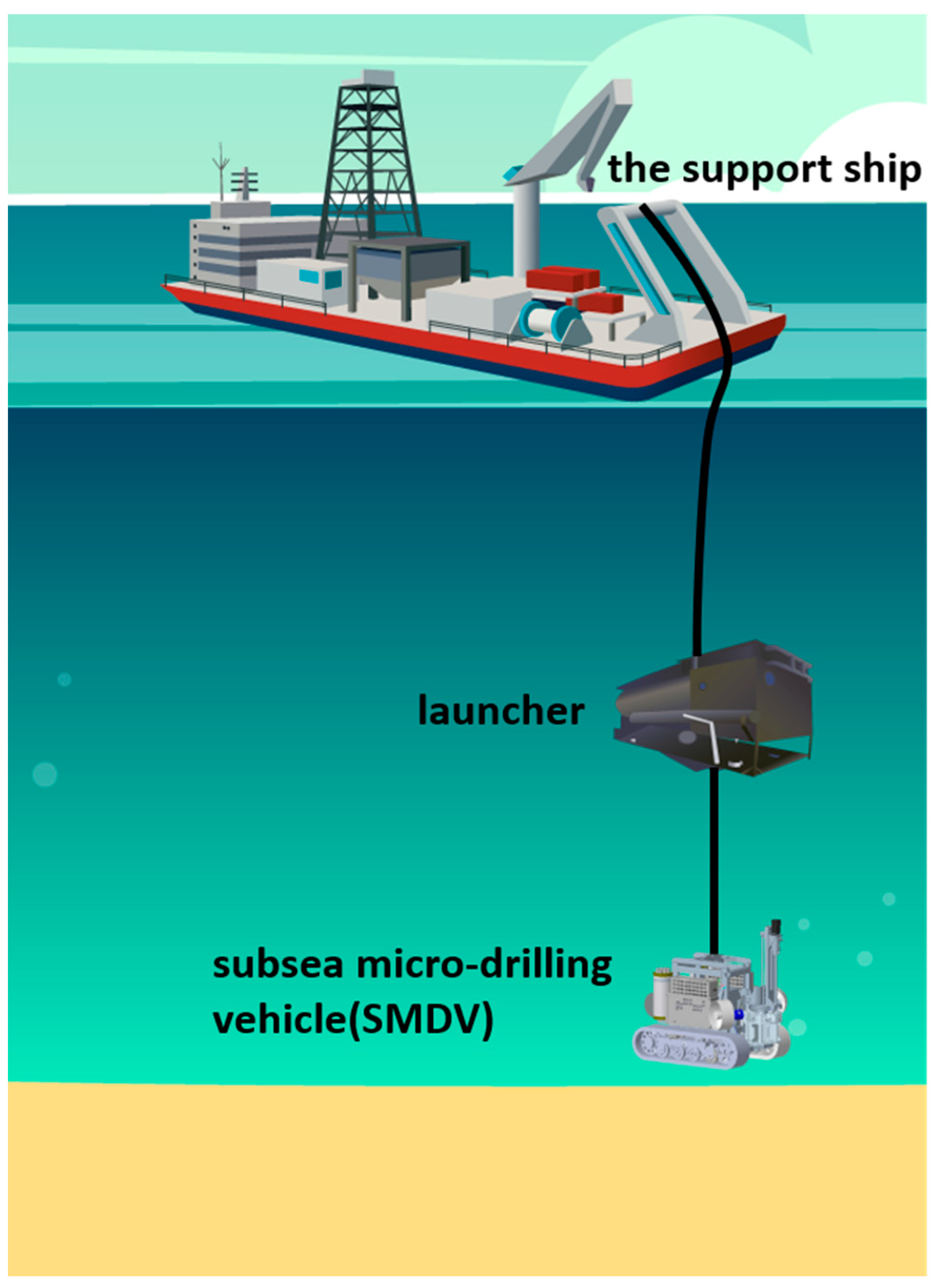
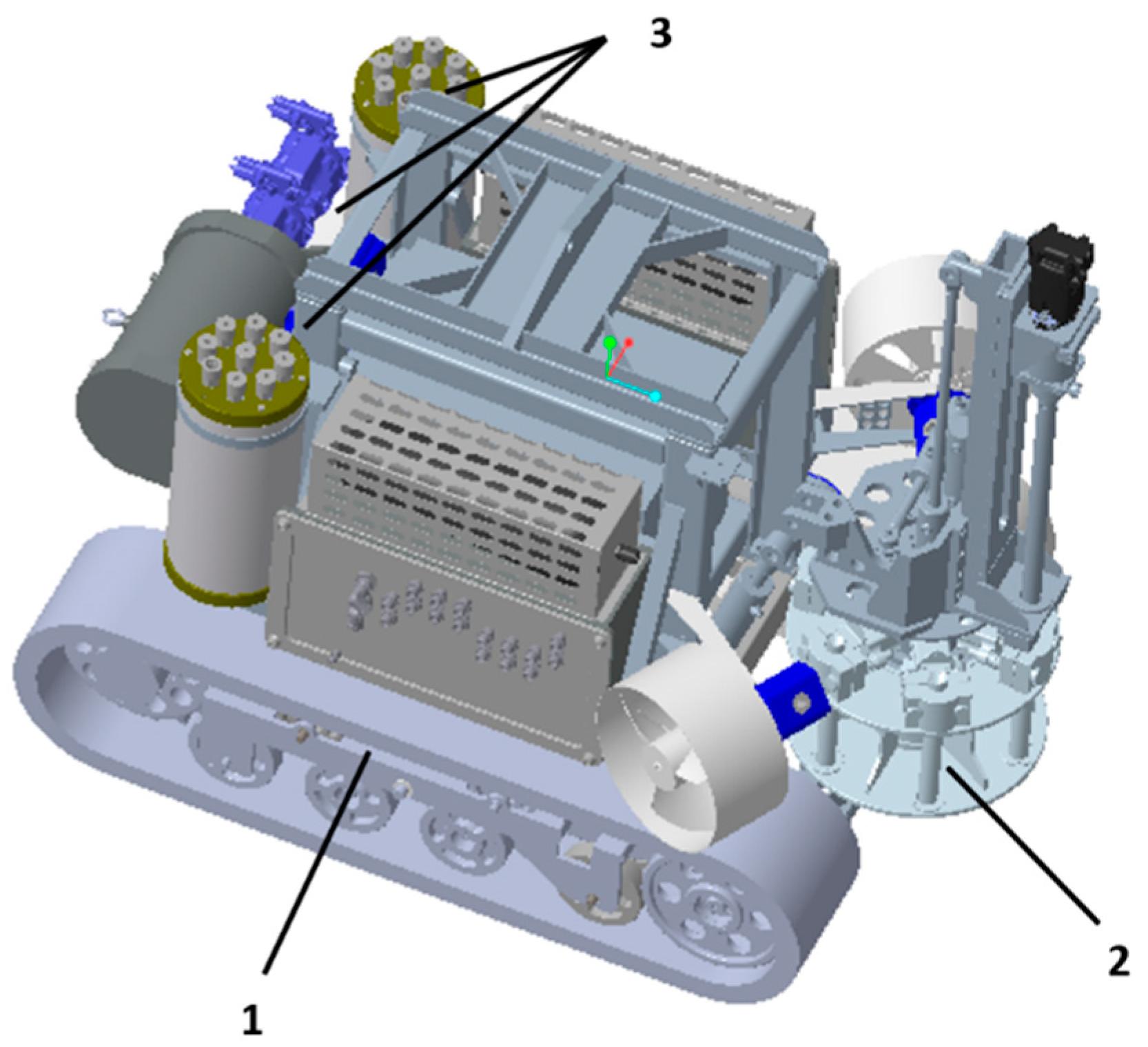
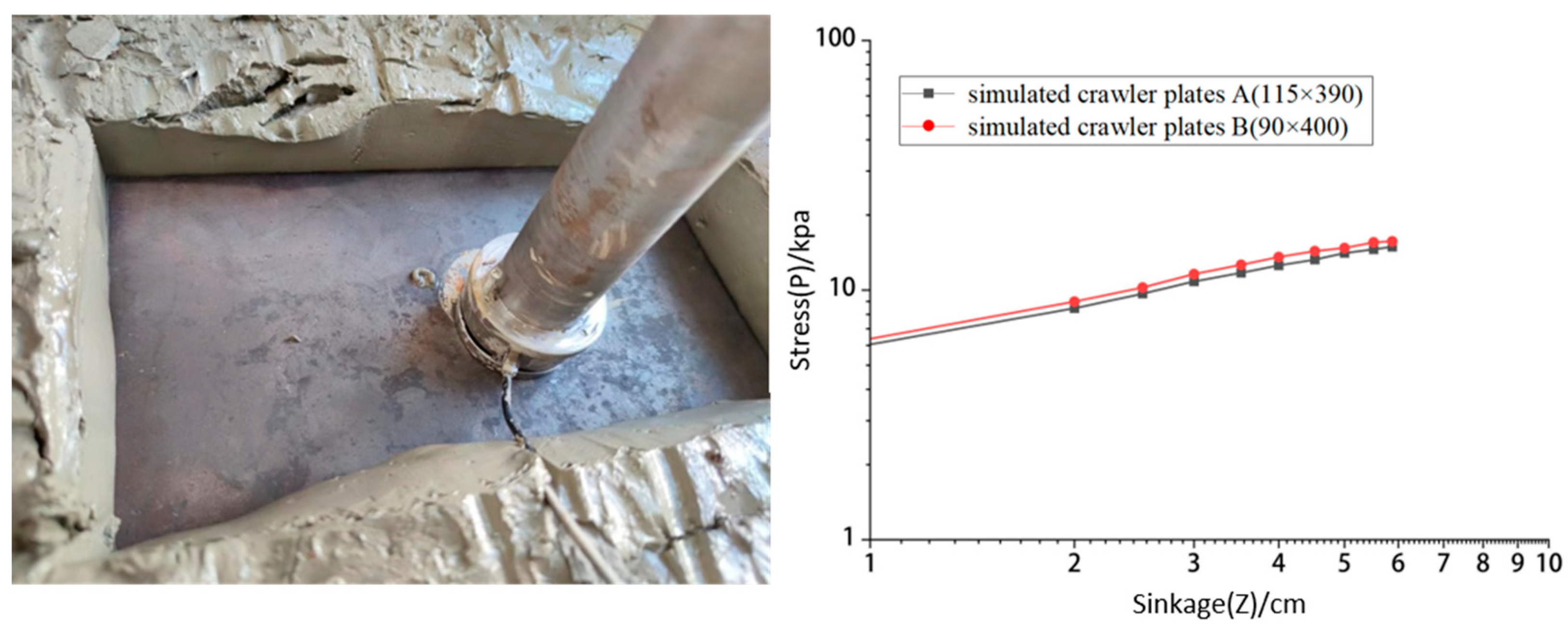
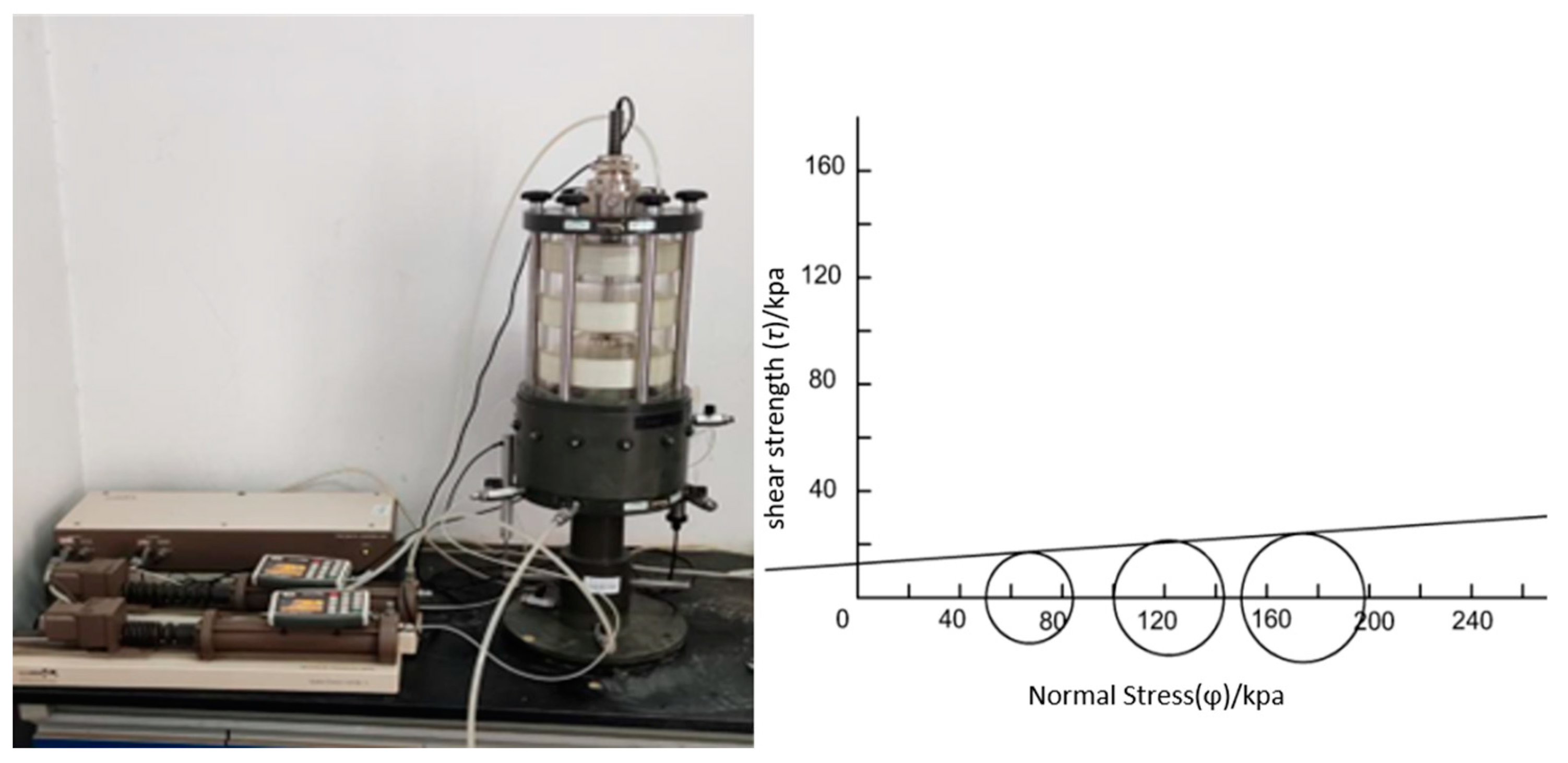
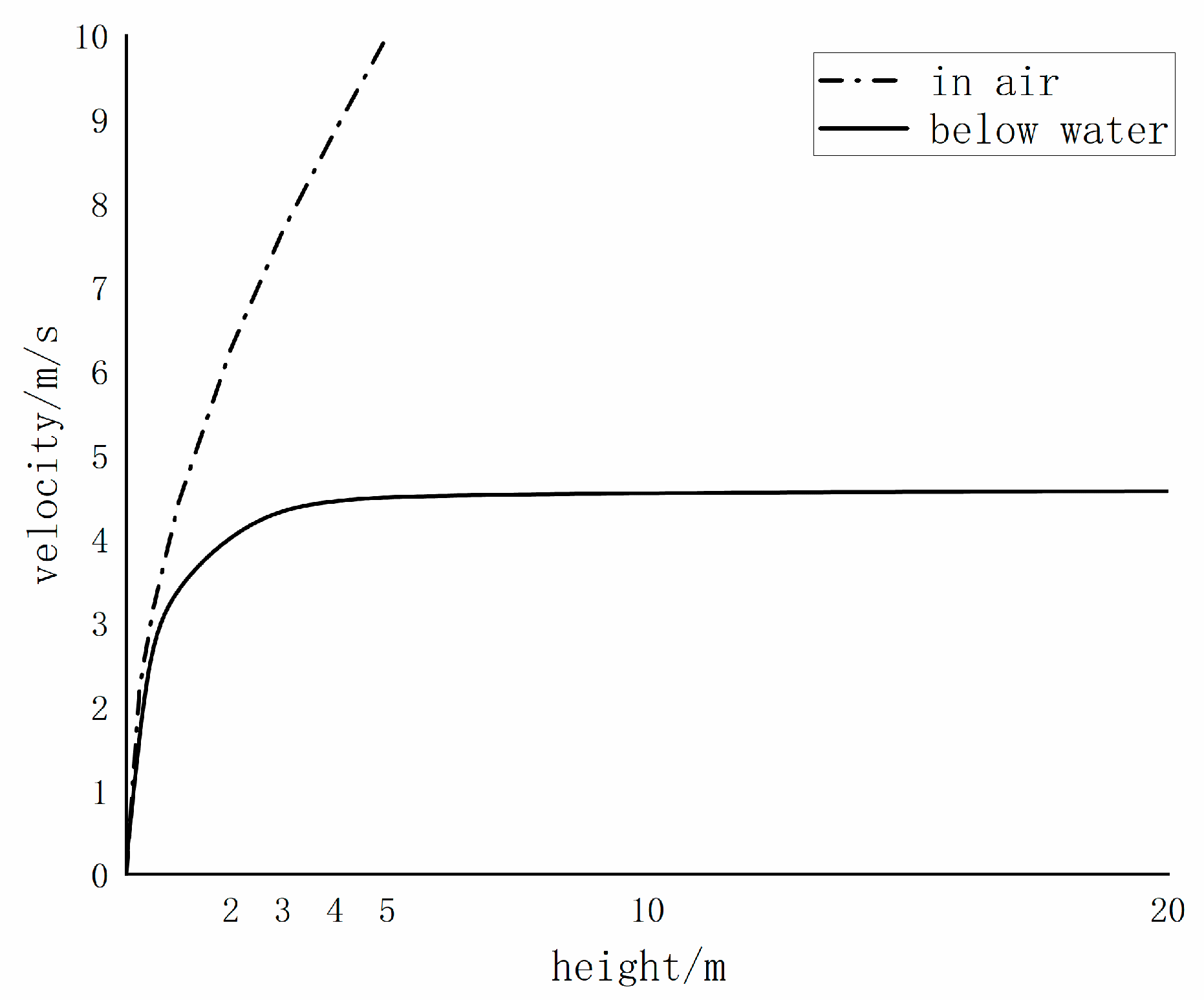


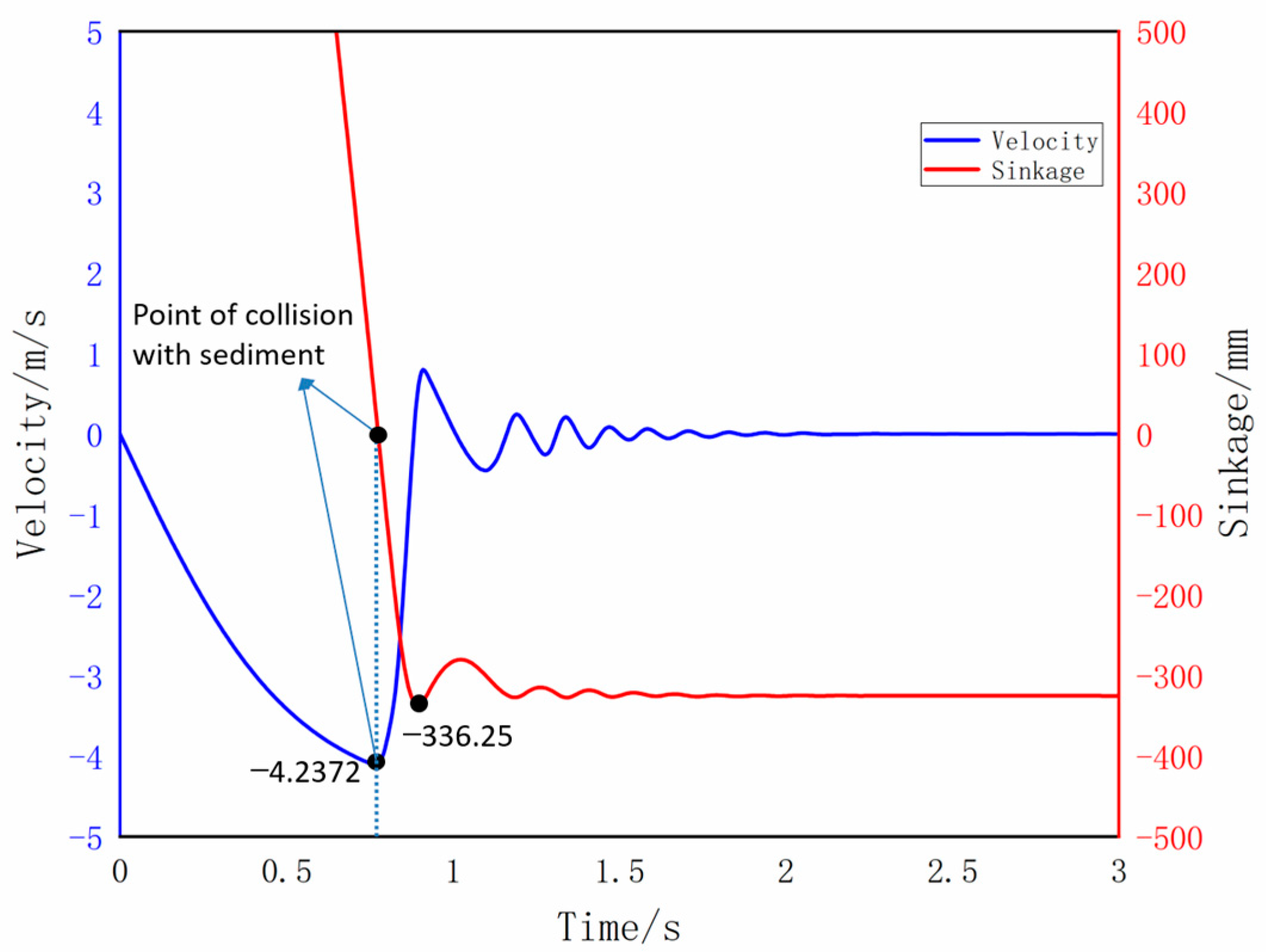



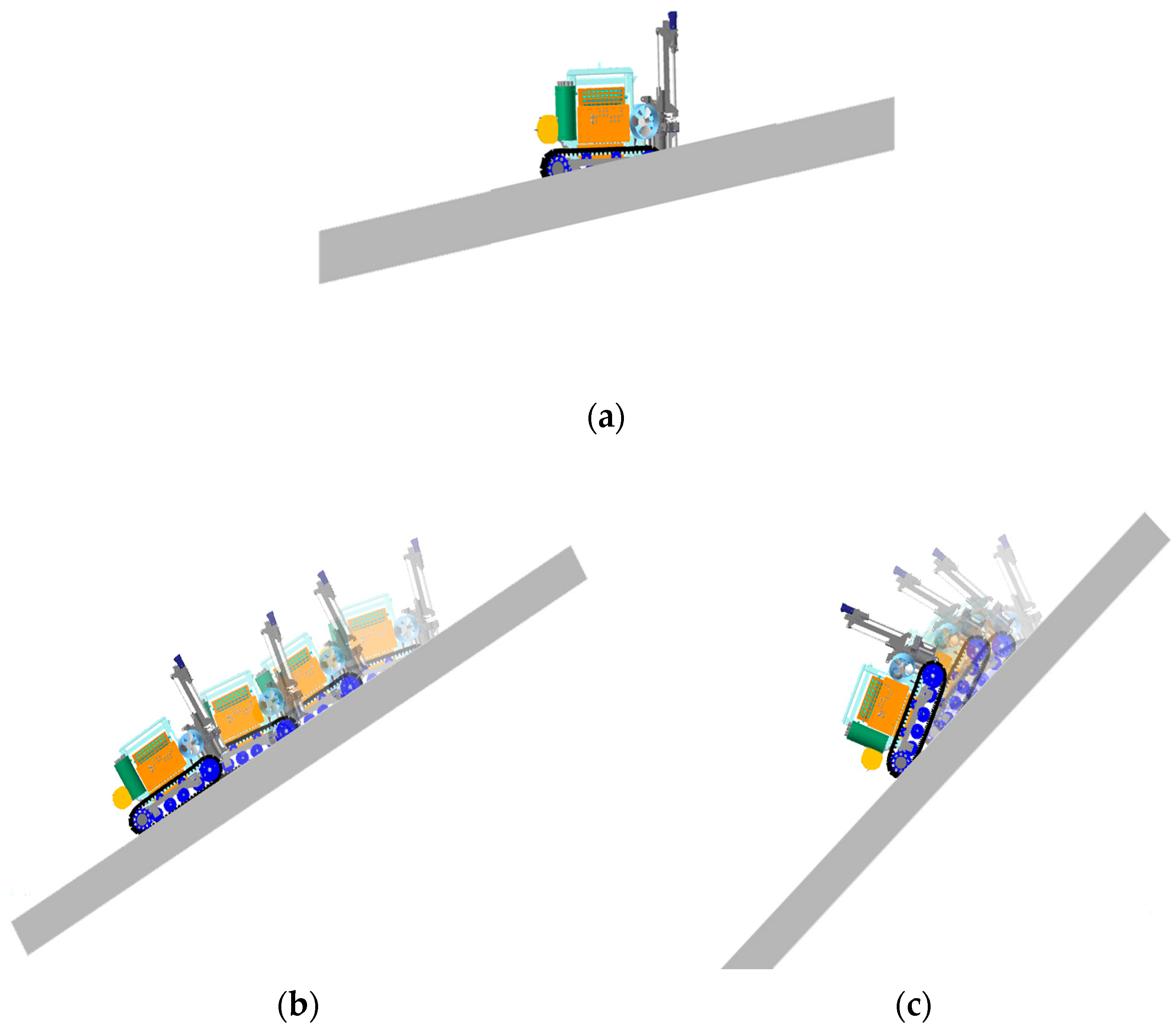

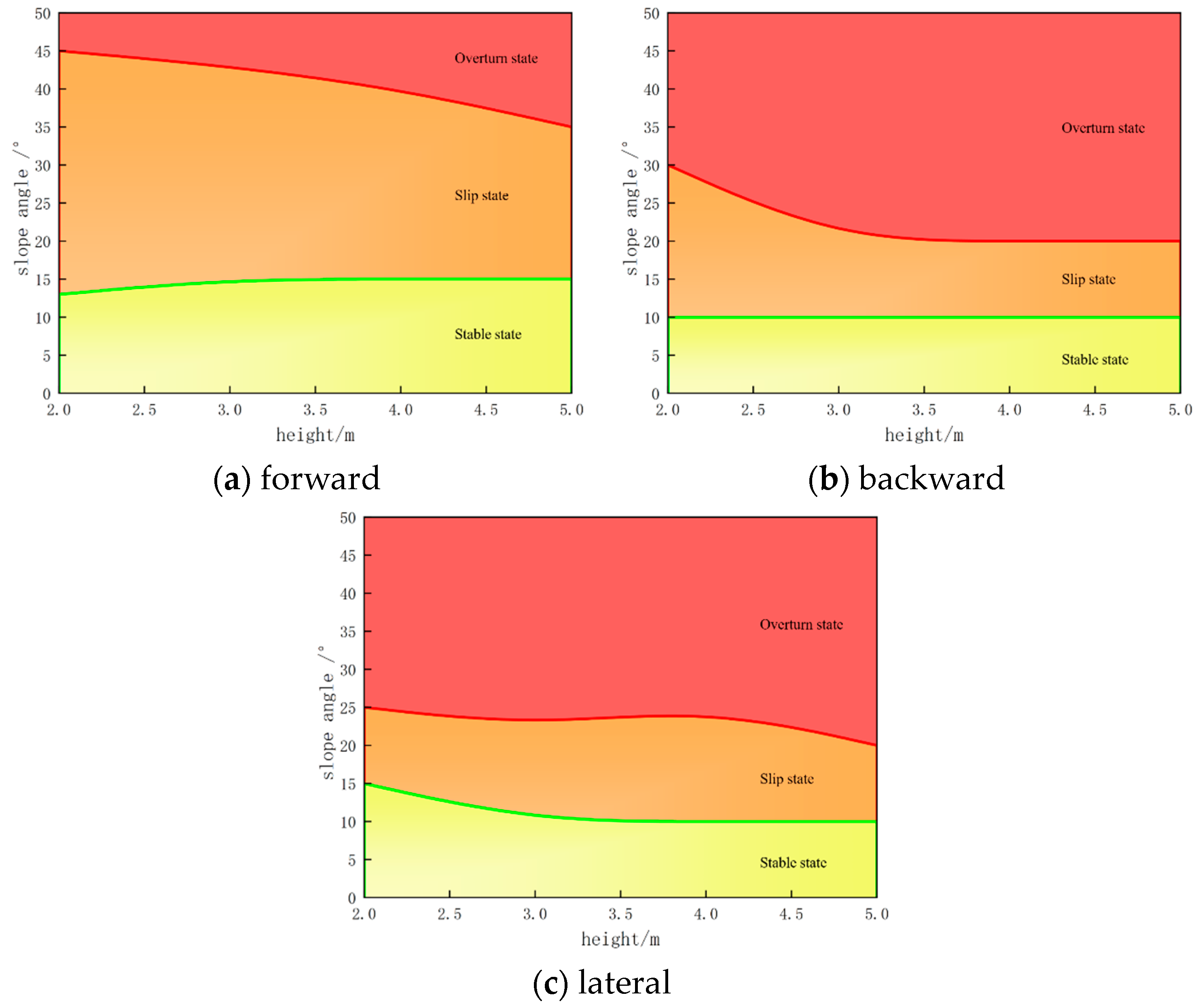
| Data Type | Values |
|---|---|
| Weight (in air)/kg | 2000 |
| Weight (in water)/kg | 1500 |
| Size/(m × m × m) | 1.6 × 1.2 × 1.2 |
| Track grounding length/mm | 1220 |
| Track width/mm | 280 |
| Center distance between left and right tracks/mm | 900 |
| Data Type | Test Data |
|---|---|
| Soil cohesive deformation modulus (kN/mn + 1) | 3.12 |
| Soil frictional deformation modulus (kN/mn + 2) | 40.5 |
| Sinkage index | 0.53 |
| Cohesive force (KPa) | 12.715 |
| Shearing resistance angle (°) | 4 |
| Data Type | Parameter | Values |
|---|---|---|
| coefficient of water resistance | Cd | 1.0 |
| waterfront area (m2) | A | 1.67 |
| SMDV volume (m3) | V | 0.169 |
| Density of seawater (kg/m3) | ρ | 1037 |
| Speed of falling motion | v | / |
| Weight (in air) | m | 2000 |
Disclaimer/Publisher’s Note: The statements, opinions and data contained in all publications are solely those of the individual author(s) and contributor(s) and not of MDPI and/or the editor(s). MDPI and/or the editor(s) disclaim responsibility for any injury to people or property resulting from any ideas, methods, instructions or products referred to in the content. |
© 2023 by the authors. Licensee MDPI, Basel, Switzerland. This article is an open access article distributed under the terms and conditions of the Creative Commons Attribution (CC BY) license (https://creativecommons.org/licenses/by/4.0/).
Share and Cite
Huang, R.; Jin, Y.; Liu, D. The Subsea Micro-Drilling Vehicle’s Dynamic Analysis during Landing. Appl. Sci. 2023, 13, 9178. https://doi.org/10.3390/app13169178
Huang R, Jin Y, Liu D. The Subsea Micro-Drilling Vehicle’s Dynamic Analysis during Landing. Applied Sciences. 2023; 13(16):9178. https://doi.org/10.3390/app13169178
Chicago/Turabian StyleHuang, Ruifan, Yongping Jin, and Deshun Liu. 2023. "The Subsea Micro-Drilling Vehicle’s Dynamic Analysis during Landing" Applied Sciences 13, no. 16: 9178. https://doi.org/10.3390/app13169178






